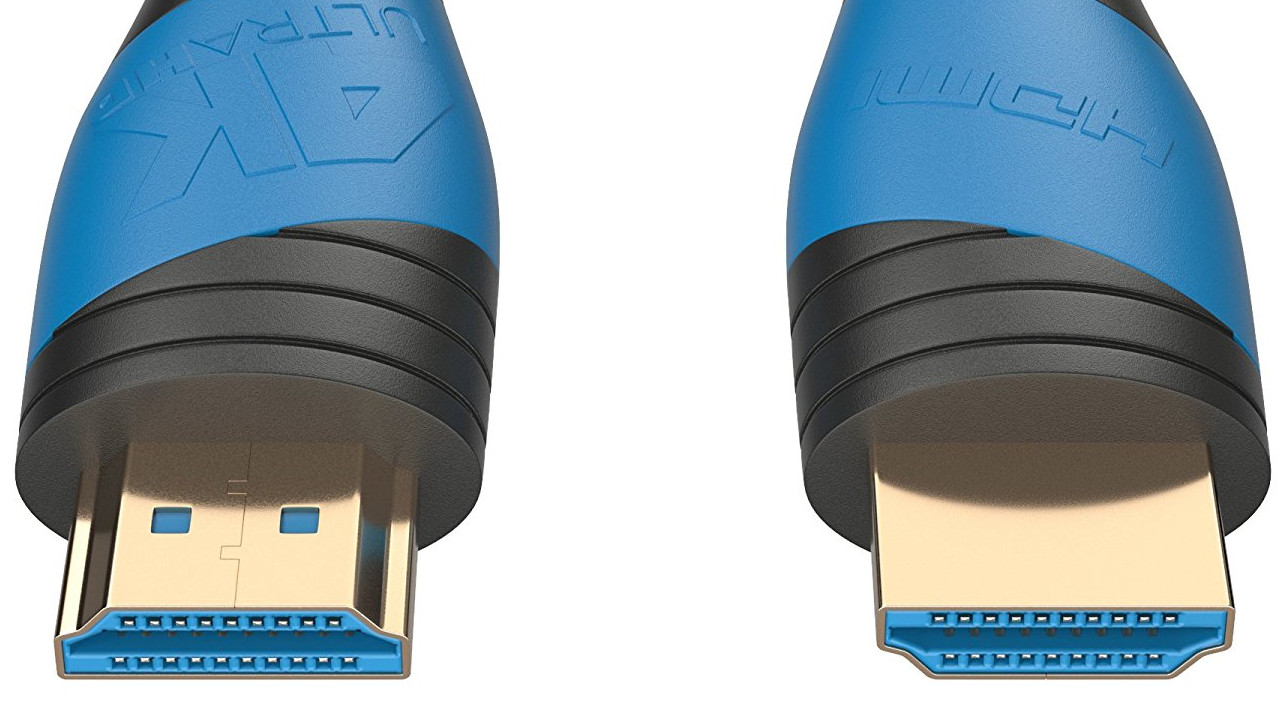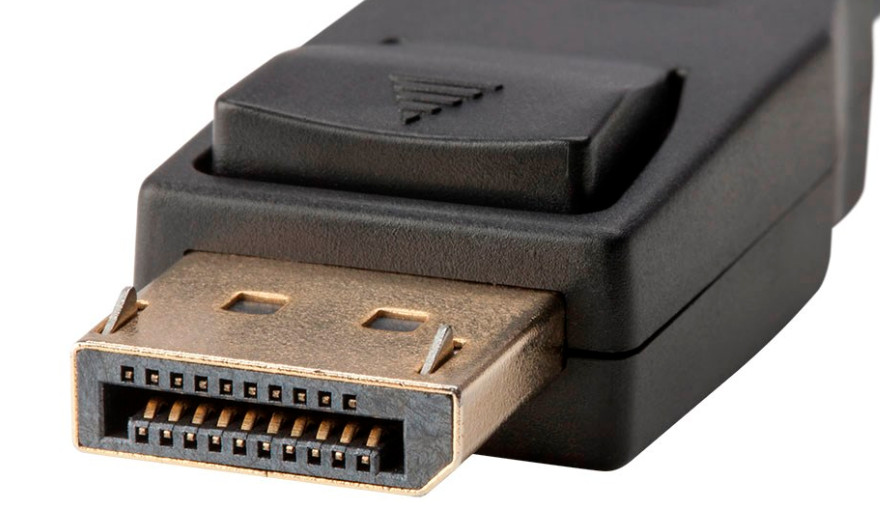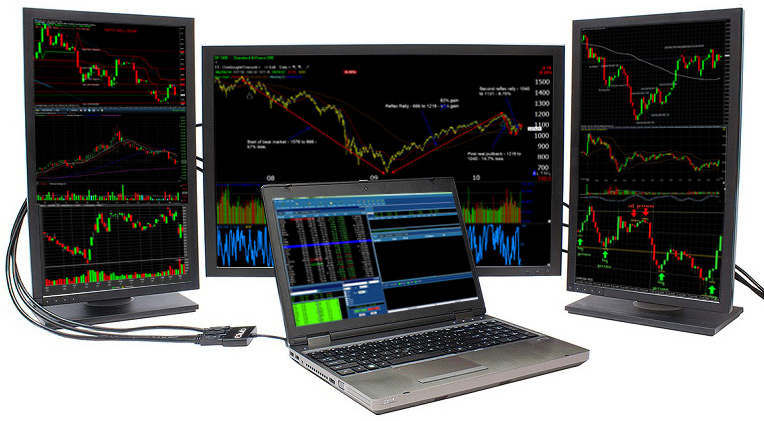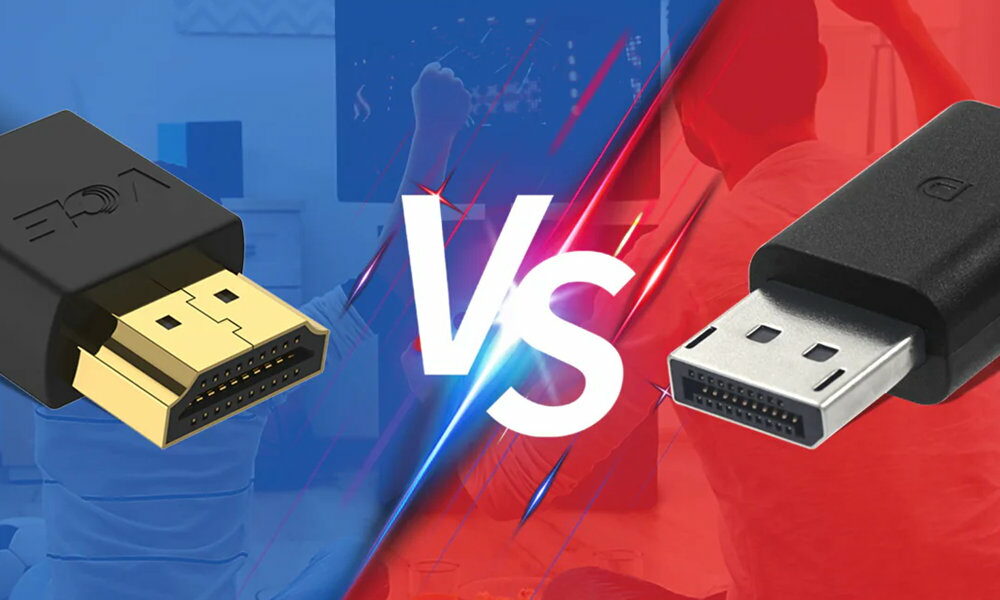DisplayPort or HDMI are the most popular interfaces for connecting screens on personal computers and transmit video and audio content. Although it has more, its main use in a PC is to connect components such as a graphics card to a computer monitor.
HDMI or DisplayPort is the reference display interface for any new or recently introduced device. But they are not the only ones. Others are still used such as VGA (Video Graphics Array), analog interface and the oldest and least advanced, which remains on a low-level graphics chip to power older monitors (especially in the enterprise market) or in the embedded segment, or DVI (Digital visual interface), which was created to improve the quality of display on digital screens and which offers high-quality video but cannot transmit sound.
Recently added another alternative that can be used: USB Type-C. It’s not a dedicated display interface like the previous one, but it’s the most versatile on the market, as it can offer power, data transfer, internet, and audio and video transmission through a single thin, double-sided cable. It supports protocols like Intel Thunderbolt, as well as the main interfaces we’re going to review, HDMI and DisplayPort. It’s not widespread yet, but it will be a connector to consider in the future as the USB Type-C installed base expands.
HDMI
High definition multimedia interface is a video standard designed by the industry to replace the old scart connector. Allows use uncompressed, encrypted high definition video plus uncompressed multi-channel audio in a single cable. Other advantages of HDMI are its features such as HDMI-CEC (HDMI Consumer Electronics Control), which allows you to control many devices with a single remote. Its focus is clear, and in addition to its use on computers, it is the interface of choice on multimedia devices connected to large screens such as televisions.
The standard HDMI connector is type A and has 19 pins. Type B with 29 pins allows an extended video channel for high resolution displays. They are available in full size (Type A), mini-HDMI (Type B) and micro-HDMI (Type C). Clear point in your favor It is a massive extension of it because you can find it on any type of device.
Among its disadvantagesNote that its connector is less rigid than previous display standards (such as VGA) and is easier for accidental disconnection and thus physical or electrical failure. Another criticism is the inclusion of digital content protection (HDCP) as a “digital restrictions” manager that prevents copying of user-transmitted content.

HDMI has undergone numerous revisions since its inception in 2002. The most widespread version is currently 1.4 and the most advanced is 2.0, a version that fixed the bandwidth limitation of previous versions up to 18 Gbps to achieve 60 FPS in 4K and 144 Hz in 1080p. HDMI 2 also includes important advantages in other sections, support for high dynamic range (HDR) and support for color depth, up to 10 and 12 bits. This version has retained plug-in level compatibility, and previous versions can be used to gain their benefits.
For the future, a new version of HDMI 2.1 is emerging, which will be a breakthrough in the standard thanks to an impressive increase in the maximum bandwidth up to 48 GB/s. This will allow access to resolutions 8K and 10K at 60 Hz and at 120 Hz in 4K. With HDMI 2.1, dynamic HDR will be available for all resolutions and will have additional features such as variable refresh rate, enhanced audio return (eARC) and support for Dolby Atmos and DTS:X. Don’t look for it because it’s not on the market yet. The first compatible products are expected later this year.
DisplayPort
Aside from the aforementioned USB Type-C and its enormous versatility, DisplayPort was the last major display interface standard to hit the market. Designed by VESA in 2008, it was specifically designed for content transmission (video, audio and data) between PC and monitor or more.
Its connector has 20 pins (32 internal connectors for laptops) and has a small mechanism that secures it to the device. As with HDMI, you can find full-size or reduced-size (with the same functions) Mini DisplayPort (MiniDP or mDP) connectors.

The most widespread version is 1.2 with a bandwidth of 17.2 Gbps, to support 4K resolution with a refresh rate of 60 Hz The most advanced version, 1.3 and 1.4, are increasingly available in more products and have bandwidths up to 32.4 Gbps. This opens the door to 8K resolution for 7,680 x 4,320 pixels. The supported audio signal supports a maximum of 8 uncompressed channels, 192 kHz, 24-bit. It also optionally supports digital restriction (DPCP) with 128-bit AES encryption and, since revision 1.1, supports content protection using the most widely used HDCP standard.
Their range of maximum supported video frequencies varies. All versions of DisplayPort support 144Hz at 1080p. Version 1.2 supports 144Hz at 2K resolution. v1.3 supports up to 120Hz in 4K or 8K at 30Hz The most advanced version, 1.4, scales up to 144Hz in 4K using Display Stream Compression (DSC) and supports up to 8K at 60Hz with HDR.
DisplayPort or HDMI – Use Cases
Since the motion is demonstrated by walking, we will look at several use cases where we have to consider the advantages of one or the other. As long as we have the ability to use both, of course, because There are times when we limit ourselves to one in particular because the monitor or graphics chip itself does not support them.
On a typical next-generation desktop computer, we shouldn’t have any problems. Currently, mid-range and higher graphics cards offer both HDMI and DisplayPort connections. For other uses, the industry offers a large number of adapters to make old and new interfaces compatible. With most use, we lose some of its benefits along the way.
– Games. Until the arrival of HDMI version 2, there was no doubt that DisplayPort was the interface of choice for PC gamers. Today, the playing field has been leveled and HDMI offers the same performance up to FHD resolution. From there, the situation varies. And there are special use cases that we will see below.
– G-Sync and FreeSync. If you’re using an NVIDIA graphics card and a G-Sync monitor, you have no choice but to DisplayPort, as the green giant doesn’t support HDMI in this type of configuration. In the case of AMD graphics cards and monitors with FreeSync -almost- the same. DisplayPort is recommended, although in this case AMD also supports FreeSync under HDMI starting with version 2x.
– General computer and professional use. HDMI 2 has improved support in areas such as color depth, but DisplayPort continues to offer higher levels of bandwidth and in all areas, especially for professional editing or similar use. For general computing purposes, HDMI 2 is fine.
– Multi-screen systems. There is no doubt that DisplayPort is unlike any other, as one of its advantages is the ability to transmit video content to multiple screens through the technology. Multi-stream transport (MST). The port is “split” between hubs and displays can be daisy-chained. It’s the section that doesn’t (and won’t) have HDMI.

– Resolution greater than 4K. Monitors with a resolution higher than 4K are still not in great supply, and their own prices, moreover, moving so many pixels, are unattainable for the consumer market. If you’re lucky enough to have a computer and screen for these resolutions, DisplayPort is the way to go in this scenario. It’s mandatory for 8K because HDMI doesn’t support it, and besides being a monstrous device, you need two DisplayPort 1.4 connections to achieve 60Hz.
– PC in the living room – home cinema. HDMI is present in 100% of today’s TVs, making it the interface of choice when connecting a living room PC for use as a streamer, games or media/storage server. HDMI 1.4 or higher supports audio return (necessary for connection to A/V amplifiers) and CEC function (Control of consumer electronics), enabling the control of several devices with one remote control. Compared to the great power of HDMI on the big screen, DisplayPort is practically non-existent and the use of USB Type-C is not widespread either.
– From laptop to TV. The same can be said for this method of use. HDMI is the majority choice if we want to deliver content via cable. We expect USB Type-C to make its way to televisions in the future, given the large number of laptops that already use it.
– From laptop to monitor. Many of us use our laptops on the go and at our desks. When you get to the office (or home), we connect a monitor as a secondary screen to increase productivity and here we have more connection options. If you have DisplayPort on your laptop and monitor, this is the best choice, while HDMI has the advantage of being much more widespread if you need to connect other devices such as projectors. USB Type-C monitors for this type of use are spreading rapidly, especially in companies.
– Sound. There are fewer differences in the audio part than in the video, and both interfaces are more than adequate, supporting up to eight audio channels at 24-bit and 192 kHz. The main difference is the audio return supported by HDMI.
– Cabling. Display Port supports fiber optic cables as an alternative to copper, allowing for greater reach, although the standard specifies maximum lengths. Specifically, up to 3 meters for full bandwidth at 8K/4K, while in 1080p the distance can be extended up to 15 meters. Exaggerated in both cases. As for HDMI, the standard does not specify a maximum length. Much has been written about HDMI cabling and the very expensive price of some. Don’t let them bother you. In the usual lengths of up to 2-3 meters, there is no loss of quality. At longer distances, yes, and there are signal boosters to compensate for them.
As a final summary. Until HDMI 2.1 is available, DisplayPort is the preferred interface (whenever possible) when working with computers with monitors. If we connect to other types of screens, such as televisions, HDMI will be the majority option. Be careful with the versions of each because they don’t all offer the same features and it’s almost more important to distinguish between versions than HDMI or DisplayPort.
Related Article | Which port should we use on a gaming PC, Display Port or HDMI?
















